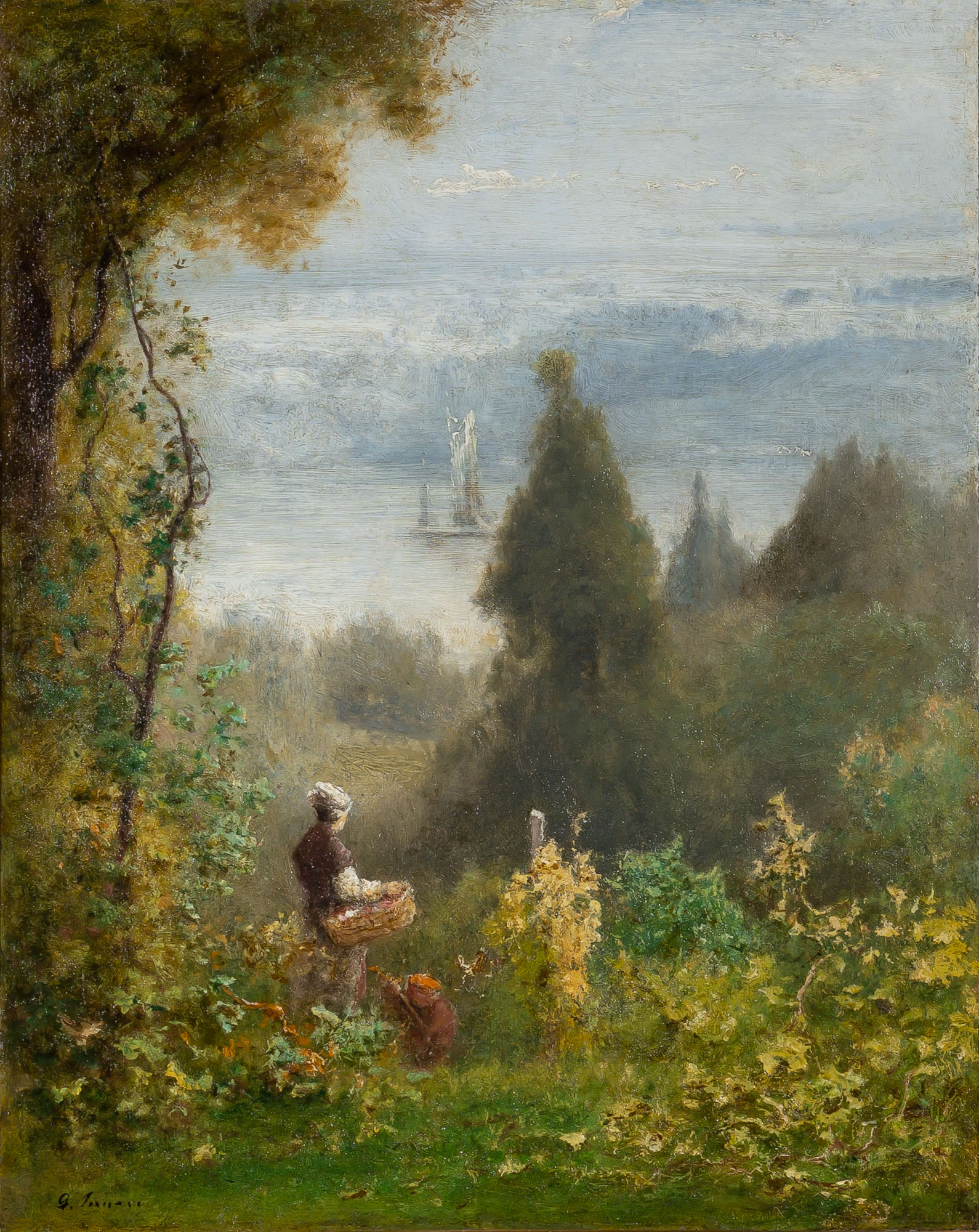
George Inness
American, 1825-1894
George Inness is regarded as one of the most thoughtful and spiritually attuned American landscape painters of the 19th century. Born in New Jersey and coming of age during the rise of the Hudson River School, Inness began his career in its shadow but soon forged a distinct path—one shaped less by topographical grandeur and more by atmosphere and emotion.
Though aligned early with American landscape traditions, Inness was deeply influenced by the French Barbizon School. His works moved beyond documentation, seeking to evoke a deeper response to nature. “The true use of art is, first, to cultivate the artist's own spiritual nature,” he once said in an interview, a conviction that reflected his mature style.
Inness’ paintings often reveal the influence of Swedenborgian philosophy, which he embraced later in life and used as a guiding lens for depicting the harmony between the visible and the invisible. His approach helped expand the definition of American landscape painting, marking a shift from detailed realism to interpretive and introspective views of the natural world. His legacy endures in both museum and among collectors who value a contemplative, visionary approach to American art.